Grow Iceberg Lettuce at Home? Absolutely! Imagine stepping into your backyard and harvesting crisp, refreshing iceberg lettuce for your salad, sandwich, or even a cool summer wrap. Forget those limp, overpriced heads at the grocery store – with a few simple tricks, you can cultivate your own thriving lettuce patch, bursting with flavor and freshness.
Home gardening, including growing your own lettuce, has a rich history. From ancient Roman gardens to the victory gardens of World War II, people have always sought to connect with nature and provide for themselves. Today, with concerns about food security and the desire for healthier eating, the appeal of home gardening is stronger than ever. Plus, there’s something incredibly satisfying about nurturing a plant from seed to table!
Why should you learn these DIY tricks to grow iceberg lettuce at home? Well, for starters, you’ll save money and reduce your carbon footprint by avoiding trips to the grocery store. More importantly, you’ll have access to lettuce that’s free from harmful pesticides and packed with nutrients. I’m going to share some easy-to-follow tips and hacks that will help you overcome common challenges and enjoy a bountiful harvest. So, grab your gardening gloves, and let’s get started!
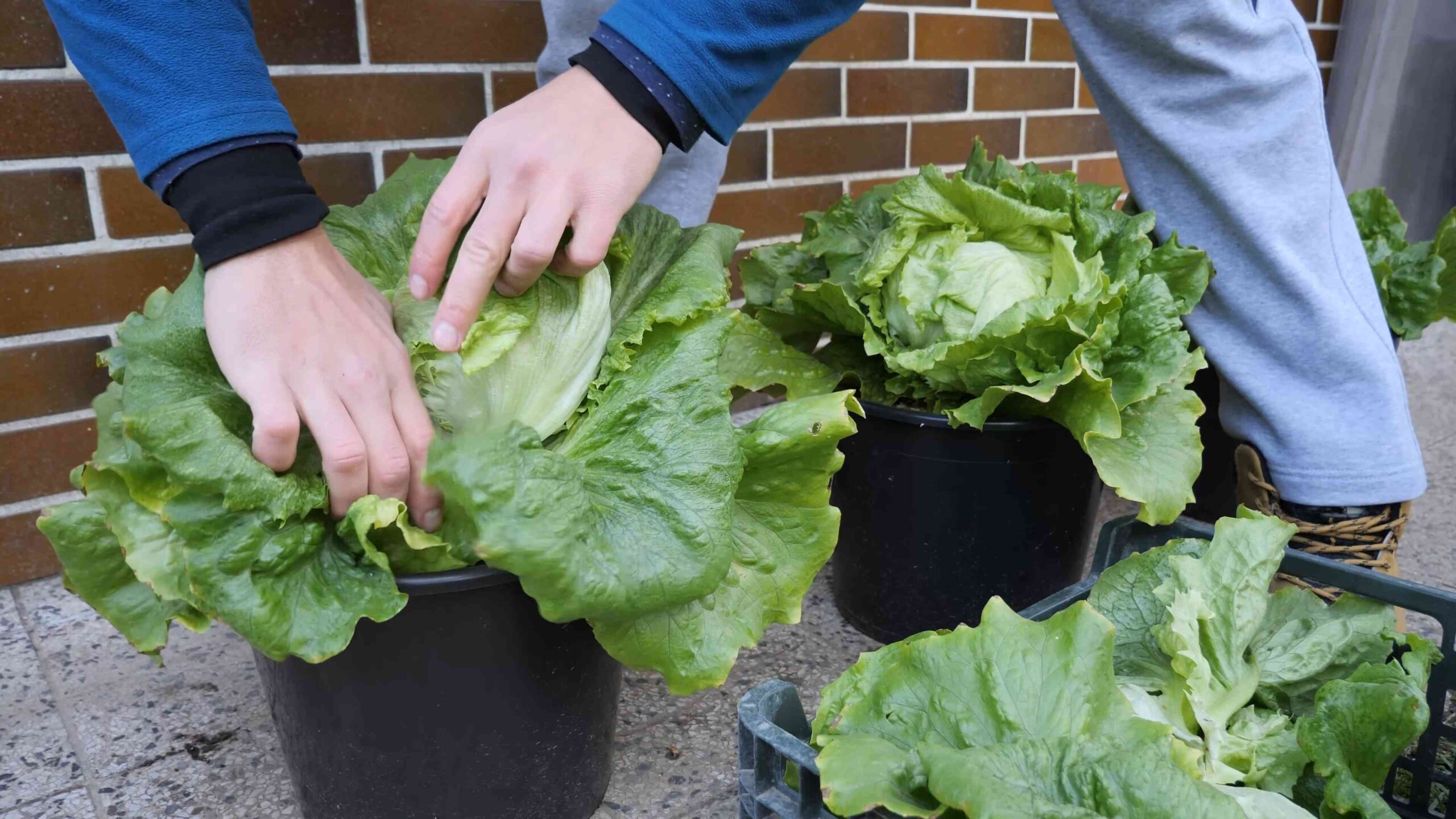
Grow Your Own Crisp Iceberg Lettuce: A DIY Guide
Hey there, fellow gardening enthusiasts! Ever dreamt of having fresh, crisp iceberg lettuce right at your fingertips? Well, dream no more! Growing your own iceberg lettuce at home is totally achievable, even if you’re a beginner. I’m going to walk you through every step, from seed to salad, so you can enjoy the satisfaction of harvesting your own homegrown goodness.
Choosing the Right Variety and Location
Before we get our hands dirty, let’s talk about choosing the right iceberg lettuce variety and finding the perfect spot for it to thrive.
* Variety Selection: Not all iceberg lettuce is created equal! Some varieties are more heat-tolerant than others, which is crucial depending on your climate. Look for varieties like ‘Great Lakes’ or ‘Ithaca’ which are known for their reliability and resistance to bolting (going to seed prematurely). Check your local nursery or seed catalog for recommendations specific to your region.
* Sunlight: Iceberg lettuce needs at least 6 hours of direct sunlight per day. Choose a location in your garden that gets plenty of sunshine. If you live in a particularly hot climate, providing some afternoon shade can help prevent bolting.
* Soil: Lettuce loves well-drained, fertile soil. Amend your soil with compost or well-rotted manure before planting to improve its structure and nutrient content. The ideal soil pH for lettuce is between 6.0 and 7.0. You can test your soil pH with a simple soil testing kit from your local garden center.
* Spacing: Iceberg lettuce needs room to grow! Plan for about 12-18 inches between plants to allow for proper air circulation and prevent overcrowding.
Starting Your Lettuce Seeds
You can either start your lettuce seeds indoors or directly sow them into your garden bed. I personally prefer starting them indoors, especially if I want an early start to the season.
* Indoor Starting (Recommended):
1. Gather Your Supplies: You’ll need seed starting trays or small pots, seed starting mix, iceberg lettuce seeds, a spray bottle, and a grow light (optional).
2. Prepare the Seed Starting Mix: Moisten the seed starting mix with water until it’s damp but not soggy.
3. Sow the Seeds: Sprinkle a few seeds into each cell or pot, about ¼ inch deep. Gently cover the seeds with the seed starting mix.
4. Water Gently: Use a spray bottle to mist the soil surface. Avoid overwatering, as this can lead to damping off (a fungal disease that kills seedlings).
5. Provide Light and Warmth: Place the seed starting trays or pots in a warm location (around 65-70°F) and under a grow light or in a sunny window. If using a sunny window, rotate the trays regularly to prevent the seedlings from leaning towards the light.
6. Keep the Soil Moist: Check the soil moisture daily and mist with water as needed to keep it consistently damp.
7. Thin the Seedlings: Once the seedlings have their first true leaves (the second set of leaves), thin them to one seedling per cell or pot. Snip off the weaker seedlings at the soil line with scissors.
8. Harden Off the Seedlings: Before transplanting the seedlings outdoors, you’ll need to harden them off. This process gradually acclimates the seedlings to outdoor conditions. Start by placing the seedlings outdoors in a sheltered location for a few hours each day, gradually increasing the amount of time they spend outdoors over the course of a week.
* Direct Sowing:
1. Prepare the Garden Bed: Clear the garden bed of weeds and debris. Amend the soil with compost or well-rotted manure.
2. Sow the Seeds: Sow the seeds directly into the soil, about ¼ inch deep and 12-18 inches apart.
3. Water Gently: Water the soil gently to avoid washing away the seeds.
4. Keep the Soil Moist: Keep the soil consistently moist until the seeds germinate.
5. Thin the Seedlings: Once the seedlings emerge, thin them to one plant every 12-18 inches.
Transplanting Your Lettuce Seedlings
Once your seedlings have been hardened off (if you started them indoors) and the danger of frost has passed, it’s time to transplant them into your garden bed.
1. Prepare the Planting Holes: Dig holes that are slightly larger than the root balls of the seedlings, spacing them 12-18 inches apart.
2. Gently Remove the Seedlings: Carefully remove the seedlings from their trays or pots, being careful not to damage the roots.
3. Plant the Seedlings: Place the seedlings into the planting holes and gently backfill with soil. Make sure the top of the root ball is level with the soil surface.
4. Water Thoroughly: Water the seedlings thoroughly after planting.
5. Mulch (Optional): Apply a layer of mulch around the plants to help retain moisture, suppress weeds, and regulate soil temperature. Straw, shredded leaves, or wood chips are all good options.
Caring for Your Iceberg Lettuce
Now that your lettuce is planted, it’s time to provide it with the care it needs to thrive.
* Watering: Lettuce needs consistent moisture to grow well. Water deeply whenever the top inch of soil feels dry to the touch. Avoid overhead watering, as this can promote fungal diseases. Drip irrigation or soaker hoses are ideal for watering lettuce.
* Fertilizing: Lettuce is a relatively light feeder, but it will benefit from occasional fertilization. Use a balanced fertilizer or a fertilizer specifically formulated for leafy greens. Follow the instructions on the fertilizer label. I like to use a liquid seaweed fertilizer diluted in water every few weeks.
* Weeding: Keep the garden bed free of weeds, as they can compete with the lettuce for nutrients and water. Hand-pull weeds carefully to avoid disturbing the lettuce roots.
* Pest Control: Lettuce can be susceptible to pests such as aphids, slugs, and snails. Inspect your plants regularly for signs of pests and take action as needed.
* Aphids: Spray aphids with a strong stream of water from a garden hose. You can also use insecticidal soap or neem oil.
* Slugs and Snails: Hand-pick slugs and snails from your plants, especially at night. You can also use slug bait or create barriers around your plants using copper tape or diatomaceous earth.
* Bolting Prevention: Bolting is when lettuce plants send up a flower stalk and the leaves become bitter. To prevent bolting, choose heat-tolerant varieties, provide afternoon shade, and water regularly. Harvest your lettuce as soon as it’s mature.
Harvesting Your Iceberg Lettuce
The moment you’ve been waiting for! Harvesting your own homegrown iceberg lettuce is incredibly rewarding.
1. When to Harvest: Iceberg lettuce is typically ready to harvest about 70-80 days after planting. The head should be firm and compact.
2. How to Harvest: Use a sharp knife to cut the head of lettuce from the base of the plant. Leave the outer leaves intact, as they may continue to produce new growth.
3. Storage: Store harvested lettuce in the refrigerator in a plastic bag or container. It will keep for about a week.
Troubleshooting Common Problems
Even with the best care, you may encounter some problems while growing iceberg lettuce. Here are some common issues and how to address them:
* Bolting: As mentioned earlier, bolting is when lettuce plants send up a flower stalk and the leaves become bitter. Prevent bolting by choosing heat-tolerant varieties, providing afternoon shade, and watering regularly.
* Tipburn: Tipburn is a condition that causes the edges of the lettuce leaves to turn brown and die. It’s usually caused by calcium deficiency or inconsistent watering. Ensure your soil has adequate calcium and water regularly.
* Pest Infestations: As discussed earlier, lettuce can be susceptible to pests such as aphids, slugs, and snails. Inspect your plants regularly for signs of pests and take action as needed.
* Fungal Diseases: Fungal diseases such as downy mildew and powdery mildew can affect lettuce plants. Prevent fungal diseases by providing good air circulation, avoiding overhead watering, and using disease-resistant varieties.
Enjoying Your Homegrown Lettuce
Congratulations! You’ve successfully grown your own iceberg lettuce. Now it’s time to enjoy the fruits (or rather, vegetables) of your labor. Use your homegrown lettuce in salads, sandwiches, wraps, or any other dish that calls for crisp, refreshing lettuce.
I hope this guide has been helpful. Happy gardening, and enjoy your delicious homegrown iceberg lettuce!
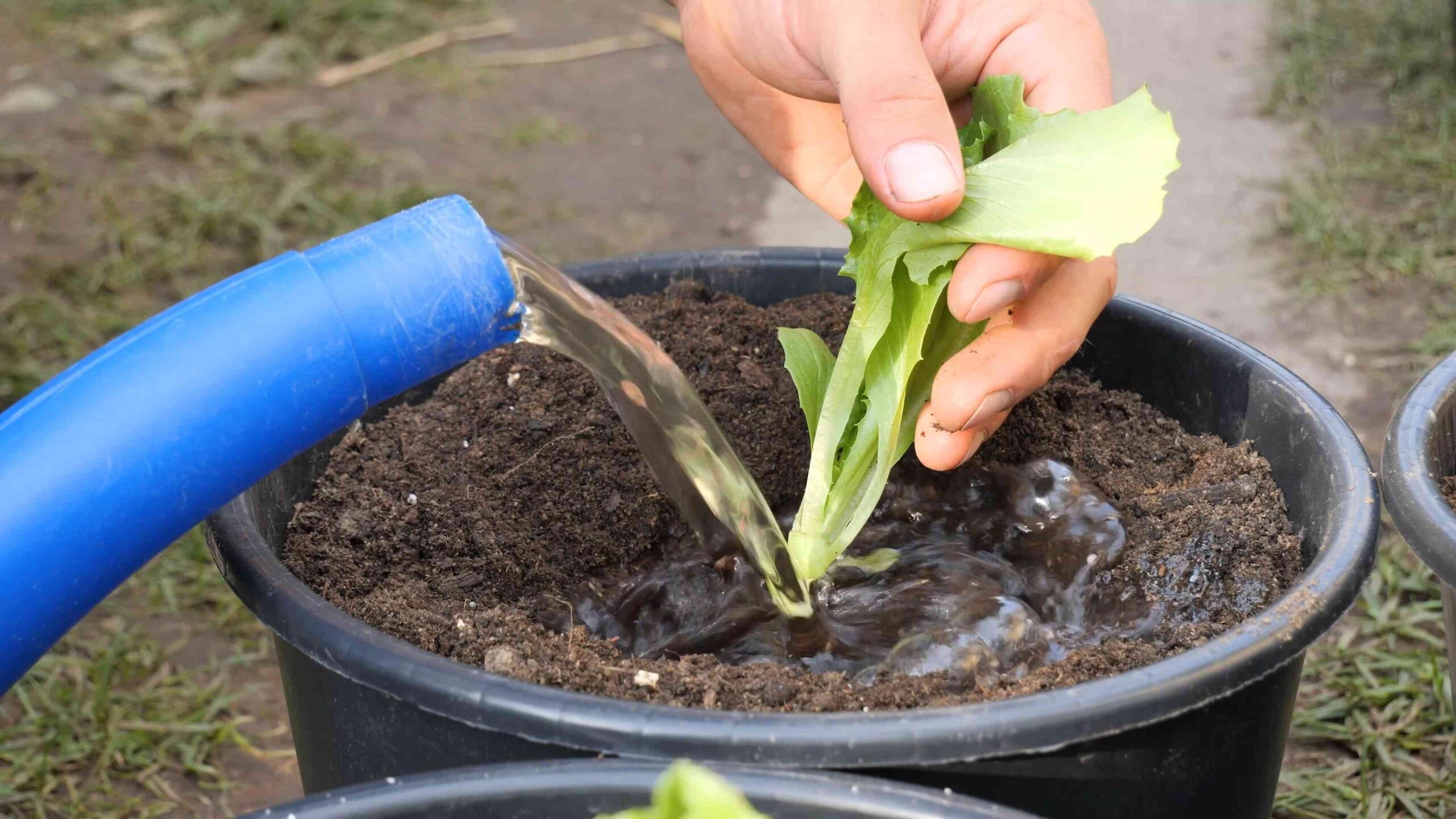
Conclusion
So, there you have it! Growing iceberg lettuce at home is not only achievable, but it’s also a deeply rewarding experience. Forget those limp, flavorless heads from the grocery store. Imagine crisp, vibrant, and utterly delicious iceberg lettuce gracing your salads, sandwiches, and wraps, all nurtured by your own hands. This DIY trick transforms your garden, balcony, or even a sunny windowsill into a miniature lettuce farm.
Why is this a must-try? Because you’re taking control of your food source. You know exactly what goes into your lettuce – no mystery pesticides or long-distance transportation. You’re reducing your carbon footprint, supporting sustainable practices, and enjoying the freshest possible produce. Plus, let’s be honest, there’s a certain satisfaction that comes from nurturing something from seed to table.
But the benefits don’t stop there. Growing your own iceberg lettuce allows for incredible customization. Want a slightly sweeter flavor? Try a different variety of iceberg, like ‘Great Lakes’ or ‘Ithaca.’ Craving a more colorful salad? Interplant your iceberg with other leafy greens like romaine or butter lettuce. Experiment with different fertilizers to see what yields the best results in your specific environment. You can even try succession planting, sowing new seeds every few weeks, to ensure a continuous harvest throughout the growing season.
Consider growing your iceberg lettuce in raised beds for improved drainage and easier access. If space is limited, container gardening is an excellent option. Just be sure to choose a pot that’s at least 12 inches deep to accommodate the root system. And for those living in warmer climates, providing some afternoon shade can prevent bolting (premature flowering) and extend your harvest.
Don’t be intimidated if you’re a beginner gardener. Growing iceberg lettuce is surprisingly straightforward, and the rewards far outweigh the effort. With a little patience, attention, and the right information, you’ll be enjoying homegrown lettuce in no time.
We wholeheartedly encourage you to give this DIY trick a try. Embrace the process, learn from your mistakes, and celebrate your successes. And most importantly, share your experience with us! We’d love to hear about your favorite varieties, your unique growing techniques, and the delicious dishes you create with your homegrown iceberg lettuce. Post pictures of your lettuce harvests, share your tips and tricks, and inspire others to embark on their own gardening adventures. Let’s build a community of home gardeners, one head of iceberg lettuce at a time!
Frequently Asked Questions (FAQ)
What is the best time of year to plant iceberg lettuce?
The ideal time to plant iceberg lettuce depends on your climate. Generally, iceberg lettuce thrives in cooler temperatures, so the best times to plant are early spring or late summer/early fall. In areas with mild winters, you might even be able to grow it throughout the winter months. Avoid planting during the hottest part of the summer, as high temperatures can cause the lettuce to bolt (go to seed), resulting in a bitter taste. Check your local frost dates and aim to plant a few weeks before the last expected frost in spring or several weeks before the first expected frost in fall.
How much sunlight does iceberg lettuce need?
Iceberg lettuce needs at least six hours of sunlight per day to grow properly. However, in hotter climates, providing some afternoon shade can help prevent bolting. If you’re growing lettuce indoors, use grow lights to supplement natural sunlight. Ensure the grow lights are positioned correctly to provide adequate light without burning the leaves.
What kind of soil is best for growing iceberg lettuce?
Iceberg lettuce prefers well-drained, fertile soil with a pH between 6.0 and 7.0. Amend your soil with compost or other organic matter to improve drainage and fertility. A slightly acidic soil is ideal. You can purchase a soil testing kit to determine your soil’s pH and nutrient levels. If your soil is heavy clay, consider growing your lettuce in raised beds or containers with a potting mix specifically designed for vegetables.
How often should I water my iceberg lettuce?
Water your iceberg lettuce regularly, keeping the soil consistently moist but not waterlogged. Water deeply at the base of the plant to avoid wetting the leaves, which can lead to fungal diseases. Check the soil moisture regularly, especially during hot or dry weather. A good rule of thumb is to water when the top inch of soil feels dry to the touch. Consider using a soaker hose or drip irrigation to deliver water directly to the roots.
How do I prevent pests and diseases from affecting my iceberg lettuce?
Several pests and diseases can affect iceberg lettuce, including aphids, slugs, snails, and fungal diseases like downy mildew. To prevent these problems, practice good garden hygiene. Remove any dead or decaying leaves from around the plants. Use organic pest control methods, such as insecticidal soap or neem oil, to control aphids and other pests. Handpick slugs and snails or use beer traps to lure them away from your lettuce. Ensure good air circulation around the plants to prevent fungal diseases. Consider using a copper tape barrier around your raised beds or containers to deter slugs and snails.
When is iceberg lettuce ready to harvest?
Iceberg lettuce is typically ready to harvest 60-80 days after planting. The head should be firm and compact, but not rock hard. To harvest, use a sharp knife to cut the head at the base of the plant. You can also harvest individual leaves as needed, starting with the outer leaves. Harvesting in the morning, before the sun heats up the lettuce, will help it stay crisp and fresh.
Can I grow iceberg lettuce in containers?
Yes, iceberg lettuce grows well in containers. Choose a pot that is at least 12 inches deep and wide to accommodate the root system. Use a high-quality potting mix and ensure the container has good drainage. Place the container in a sunny location and water regularly. Container-grown lettuce may dry out more quickly than lettuce grown in the ground, so check the soil moisture frequently.
How do I store harvested iceberg lettuce?
To store harvested iceberg lettuce, rinse it thoroughly and pat it dry with a clean towel. Wrap the lettuce in a paper towel and place it in a plastic bag in the refrigerator. This will help keep it crisp and fresh for up to a week. Avoid storing lettuce near fruits like apples or bananas, as they release ethylene gas, which can cause the lettuce to brown.
What are some common problems when growing iceberg lettuce and how can I fix them?
Some common problems include bolting (premature flowering), tip burn (browning of the leaf edges), and pest infestations. Bolting can be prevented by planting at the right time of year and providing some afternoon shade. Tip burn can be caused by inconsistent watering or nutrient deficiencies. Ensure you are watering regularly and fertilizing with a balanced fertilizer. Pest infestations can be controlled with organic pest control methods.
Can I save seeds from my iceberg lettuce to plant next year?
Saving seeds from iceberg lettuce can be challenging, as it is a biennial plant, meaning it typically flowers and produces seeds in its second year. However, if you allow a plant to bolt and flower, you can collect the seeds once the seed heads have dried. Keep in mind that the resulting plants may not be true to type, especially if you are growing multiple varieties of lettuce. Store the seeds in a cool, dry place until you are ready to plant them.


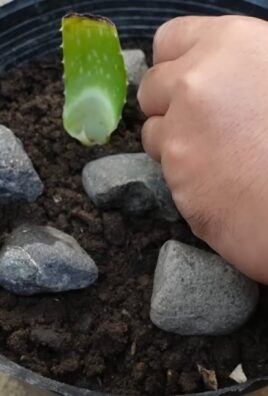
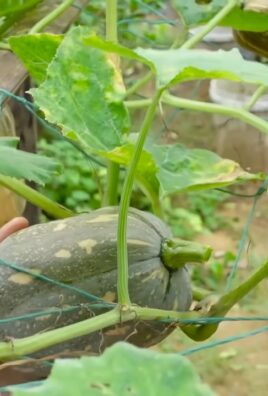
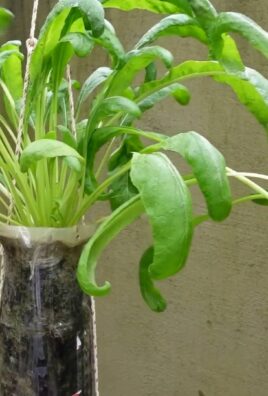
Leave a Comment